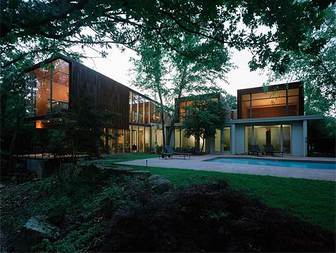- Home
- About
- Software
- Tutorials
- Google Sketchup Tutorials>
- Sketchup Hip Roof Technique
- Sketchup: Advanced Copy Tools
- Sketchup: Basic Animation Tecnique
- Sketchup: Scaffold Creation Tutorial
- Sketchup: Construction Sequence Animation Tutorial
- Sketchup : Lathe Technique - Follow Me Tool
- Sketchup - Cone Creation Tutorial
- Sketchup - Sphere Creation Tutorial
- Sketchup - Volumetric Diagram using 3D Text
- Tutorial - Sketchup to Kerkythea Clay Rendering Technique
- Header Image Creation Tutorial, Revit and Photoshop
- Adobe Illustrator Tutorial Series>
- Google Sketchup Tutorials>
- Your Thesis
- Portfolio Workshop
- Forum
- Blog
- Contact
Introduction to your Design Thesis.

Your Thesis project should be treated, in essence, as your first really professionally piece of design work, regardless of your discipline. Although you may have approached previous projects in a professional manner in the past, it is your thesis project which defines who you were as a student and generally attributes the highest amount of marks towards your accreditation. It also typically has the largest and most varied chunks of work assigned to it out of all the projects which you are allocated during your time at study, and therefore is meant to act as an accurate depiction of your many competencies and strengths which you have developed and grown during your time as a student. Basically, it is meant to show that you are ready for the big bad world, meaning that it merits its vast workload, careful detailed considerations and multiple all-nighters which are synonymous to this field of study.
The main failure of students at this stage of their study is to appropriately present their thought processes. To have a beautiful, functional and cost effective design all neatly presented on boards at the end of your thesis is the ideal situation to find oneself in; However to have such a beautiful final product without any explanation of how you came to make such informed design decisions renders your design worthless. The simple addition of a sketchbook/logbook which denotes all of your thought processes from the project instigation right through to its presentation will make or break your thesis. Every single consideration, from site conditions, environmental considerations, economic constraints, climates and micro-climates, materials, finishes, labour, circulation etc etc. must be acknowledged and visually presented within your sketchbook, and therefore submitted alongside your presentation pieces, boards, models, drawings and reports. This informs the academic team of all your considerations which highlights your understanding of technical design and is required to add depth and understanding to your final design. Another benefit of having a logbook/sketchbook similar to what I have described is it basically gives you the structure of your verbal presentation which you will have to give to the academic team, ensuring that you don't leave any important information about your work out. Ultimately, you have your verbal presentation completed before you even start the final design of your building, which can be a lifesaver when a deadline is looming.
In this section of the site I will inform you of the multitude of considerations one must make when initiating their thesis project, and will provide you with a sequential order in which you should approach your thesis project. Just remember, everything goes into the sketchbook, even if its seems arbitrary, obvious or mundane.
The main failure of students at this stage of their study is to appropriately present their thought processes. To have a beautiful, functional and cost effective design all neatly presented on boards at the end of your thesis is the ideal situation to find oneself in; However to have such a beautiful final product without any explanation of how you came to make such informed design decisions renders your design worthless. The simple addition of a sketchbook/logbook which denotes all of your thought processes from the project instigation right through to its presentation will make or break your thesis. Every single consideration, from site conditions, environmental considerations, economic constraints, climates and micro-climates, materials, finishes, labour, circulation etc etc. must be acknowledged and visually presented within your sketchbook, and therefore submitted alongside your presentation pieces, boards, models, drawings and reports. This informs the academic team of all your considerations which highlights your understanding of technical design and is required to add depth and understanding to your final design. Another benefit of having a logbook/sketchbook similar to what I have described is it basically gives you the structure of your verbal presentation which you will have to give to the academic team, ensuring that you don't leave any important information about your work out. Ultimately, you have your verbal presentation completed before you even start the final design of your building, which can be a lifesaver when a deadline is looming.
In this section of the site I will inform you of the multitude of considerations one must make when initiating their thesis project, and will provide you with a sequential order in which you should approach your thesis project. Just remember, everything goes into the sketchbook, even if its seems arbitrary, obvious or mundane.
